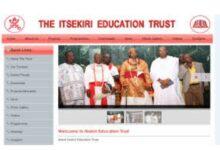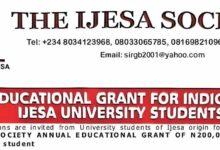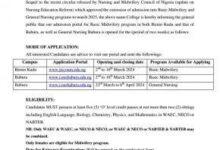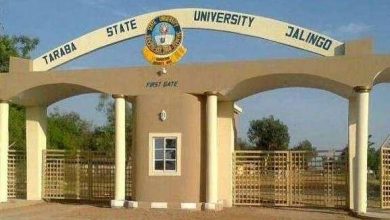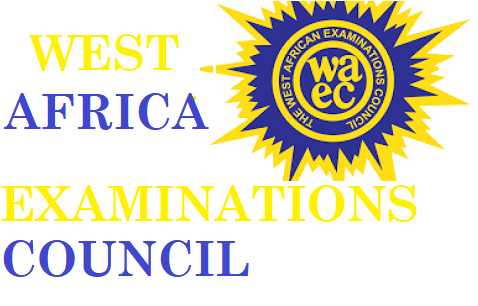
WAEC Syllabus for Refrigeration And Air-Conditioning
WAEC Syllabus for Refrigeration And Air-Conditioning. WAEC Syllabus for Refrigeration And Air-Conditioning is available for all candidates who want to participate in the examination. The West African examination council (WAEC) has officially introduced a syllabus that will guide all the WAEC candidates who wish to write the WAEC examination this year. For a very successful WAEC Refrigeration And Air-Conditioning examination for this year, you need to check out the available areas of concentration. It has been divided into sections with chapters, followed by the topics to be covered in preparation for the exams. In the WAEC Syllabus for Refrigeration And Air-Conditioning, you will also see the format of how the WAEC Refrigeration And Air-Conditioning questions will be presented. Jamb form
There are 3 sections to answer questions from. Paper 1 is Objective and paper 2 contains essay questions and paper 3 is practical. Where paper one (1) carries 1hour for 50 marks; paper two (2) carries 70 marks and paper three (3) 1¾ hours and carry 80 marks
👉 Relocate to Canada Today!
Live, Study and Work in Canada. No Payment is Required! Hurry Now click here to Apply >> Immigrate to Canada
This WAEC syllabus is for both the O’level WAEC and General Certificate Examination (GCE) candidates. Final year students in the senior secondary school level and external candidates are eligible to make use of this syllabus and prepare ahead of the examination. WAEC Syllabus for Refrigeration And Air-Conditioning
See the full detailed information concerning the WAEC Refrigeration And Air-Conditioning Syllabus below.
SCHEME OF EXAMINATION
The examinations shall consist of three papers, all of which must be taken. Papers 1 and 2 shall be composite and will be taken at one sitting.
Paper 1: This will consist of forty compulsory multiple choice questions. Candidates will be allowed 1 hour for the paper. It will carry 40 marks.
Paper 2: There shall be five essay questions out of which candidates will be expected to answer any four in 1 hour 30 minutes for 60 marks.
Paper 3: There shall be two practical questions for candidate to answer one of them within 2 hours for 100 marks.
A list of materials (cutting list) shall be made available to the schools not less than two weeks before the paper is taken for their procurement and preparation for the examination. Candidate shall carry out the task in the presence of an examiner.
👉 Relocate to Canada Today!
Live, Study and Work in Canada. No Payment is Required! Hurry Now click here to Apply >> Immigrate to CanadaAlternatively, the Council may consider using the alternative to practical work testing method in the event of constraints on requisite facilities. In this case, two compulsory questions shall be made available for candidates to answer within 2 hours for 100 marks. The paper shall test candidates’ real life experience in the workshop, abilities to identify and use requisite tools, use of measuring instruments and trouble shooting, etc. Free hand sketches of hand tools, circuits and wiring diagrams of refrigeration and air-conditioning systems may also be required.
DETAILED SYLLABUS
| S/NO. | TOPIC | CONTENT | PRACTICAL |
| 1 | Safety and first aid in the workshop. | 1.1. Workshop rules and regulations 1.2. Safety devices/equipment – helmet, goggles, safety boots, hand gloves, overall, apron sand bag, fire extinguishers, etc. 1.3. Accident: causes and prevention techniques. 1.4. First Aid – materials for First Aid, charts, posters and first aid box, etc. 1.5. Application of first aid materials. |
1.2.1 Identification and operation of various types of fire extinguishers |
| 2 | Energy, matter and power.
(a) Energy
(b) Nature of matter.
(c) power. |
2.1. Definition of energy
2.2. The process of energy conversion electrical to mechanical, gas to vapour, mechanical to heat. 2.3. Meaning of internal energy. 2.4. Enthalpy of a fluid substance, its pressure, volume and temperature of internal energy. 2.5. The ph diagram of refrigerant. 2.6. State of matter – solid, liquid, gas or vapour.
2.7. Change of state of matter. 2.8. The meaning of power. 2.9. Calculation of power used by a compressor. 2.10. Unit of power: watts and kilowatts unit of heat: joules and kilojoules. |
2.2.1. Demonstration of conversion of mechanical to heat energy e.g. rubbing of palms.
2.6.1. Demonstrate the conversion of ice block to water. |
| 3 | Temperature and pressure.
(a) Temperature and its measurement |
3.1. Concept of temperature. 3.2. Different types of thermometer e.g. gas, resistance, liquid and thermocouple.
|
|
|
(b) Pressure and its measurement |
3.3. Temperature scale conversion
– centigrade to Fahrenheit – Celsius to Kelvin – Fahrenheit to rankine 3.4. International practical temperature – The boiling point of oxygen 182.97ºC – The triple point of water 0.01 ºC – The boiling point of water 100 ºC 3.5. Concept of pressure 3.6. Different types of pressure measuring devices e.g. barometer, manometer, bourdon tube gauge. 3.7. Pressure measurement 3.8. Uses of suction and high-pressure gauges.
3.9. Effects of temperature, pressure and volume in refrigeration and air conditioning systems. 3.10. Gas law, Boyles law, Charles law and Dalton’s law. 3.11. Calculations involving general gas law. Formulae:- – P1 V1 = P2V2 – P1 = P2 T1 T2 – V1 = V2 – T1 T2 – P1 V1 = P2V2 T1 T2 3.12 Plotting various temperature scales |
3.6.1. Demonstration of the use of a barometer.
3.8.1. Demonstrate how suction and high-pressure gauges are used to determine the performance of a refrigerant. |
|
| 4 | Refrigeration and air conditioning systems.
(a) Introduction to refrigeration.
(b) Refrigerants
(c) Air-Conditioning processes |
4.1. Refrigeration cycle – Evaporation, compression, condensation and expansion. 4.2. Layout diagram of refrigeration systems. 4.3. Types and applications of the various forms of refrigeration. 4.4. Principles of operation of forms of the refrigeration system. 4.5. Functions of the component and accessories e.g. relay, solenoid valves, capacitors and thermostat. 4.6. Definition and types of refrigerants
4.7. Chemical names and formulae. 4.8. Properties and uses of refrigerants. 4.9. Refrigerants flow controls e.g. TEV, AEV, capillary tube. 4.10. Operations of refrigerant flow controls.
4.11. Psychometric properties of air.
4.12. The processes of air conditioning: heating and cooling. 4.13. Latent and sensible heat, saturated and super-saturated vapour. |
4.6.1. Identification of refrigerant by cylinder colours.
4.11.1. Demonstration of air conditioning principle by sling psychrometer.
4.13.1 Demonstration of the difference between latent and sensible heat by use of methylated spirit on human skin. |
| 5. | Compressors, Condenses and Evaporators
(a) Compressors
(b) Condensers. |
5.1. Types of compressors 5.2 Construction of compressors. 5.3. Working principles of compressors. 5.4. Construction of condensers.
5.5. Calculation of heat load on condensers. 5.6. Types and functions of liquid receiver and service valves. 5.7. Principle of operation of liquid receiver and service valves. 5.8. Types of evaporators. 5.9. Construction and services of evaporators. 5.10. Working principles of evaporators. 5.11. Heat load estimates on evaporators. |
5.4.1. Demonstrate how to service a condenser.
5.9.1. Demonstrate how to service evaporators |
| 6. | Workshop practices.
(a) Basic tools used in refrigeration and air-conditioning workshops
(b) Fault diagnosis and troubleshooting. |
6.1. Basic tools – hacksaw, coil spring benders, reamers, tube cutters, etc. 6.2. Tools and procedures for servicing window unit air- conditioner. 6.3. Different methods of diagnosing faults systematic and observation. 6.4. Common faults in refrigeration systems and their symptoms – leakage, faulty units, faulty compressor, poor cooling and current leakage.
|
6.2.1. Servicing of a window air-conditioner.
|
|
(c) Maintenance and Testing |
6.5. Techniques of effective repairs in refrigeration and air- conditioning systems.
6.6. Techniques of troubleshooting in a given system. 6.7. Testing for leakages, polarity, insulation continuity, pressure and efficiency.
6.8. Maintenance of compressors, evaporators, motors, condensers, valves, accumulators and contactors. |
6.7.1. Demonstrate how to test for leakages, polarity continuity and efficiency. 6.8.1. Demonstrate how to repair faults in compressors, evaporators, motor and condensers. |
|
| 7 | Installation processes
(a) Piping, Ducting and Trunking
(b) Motors and generators
(c) Cold room |
7.1. Concept of piping, ducting and trunking. 7.2. Piping a condenser and an evaporator. 7.3. Ducting, trunking and installation of air-conditioners.
7.4. Piping, ducting and trunking tools – mallet hammer, flaring tools, silver tape, dot-punch, bending spring, amaflex, hacksaw, PVC pipes. 7.5. Types, functions, operations and application of motors and generators. 7.6. Installation procedures for motors and generators. 7.7. Maintenance of motors and generators in a refrigeration system. 7.8. Working principles of cold room. 7.9. Cold room installation procedures. |
7.3.1. Installation of a split air-conditioner.
7.7.1 Servicing of motors and generators. |
| 7.10. Factors affecting cold room operations. | |||
| 8. | Insulation processes
Insulation of refrigeration and air-conditioning system. |
8.1. Importance of insulation of refrigeration and air-conditioning systems.
8.2. Types of insulating materials – glasswool, fibre glass, polysterene foam, wood, bitumen, ceramic, etc. 8.3. Functions and properties of insulation materials. 8.4. Procedure for insulating refrigeration and air- conditioning systems. |
|
| 9. | Entrepreneurship.
(a) Business concept.
(b) Marketing
(c) Accounting |
9.1. Concept of business enterprise and types of businesses – sole proprietorship, partnership, limited liability, etc. 9.2. Sources of finance – loan, mortgage, shares, overdrafts, savings, etc. 9.3. Types, functions of marketing styles. 9.4. Meaningful marketing at the least cost. 9.5. Marketing protocol and cost. 9.6. Principles of Accounting. 9.7. The concept of business as a separate entity. 9.8. Ledger, trial balance and balance sheet. |
9.4.1. Carry out a commercial marketing survey to set up refrigeration and air-conditioning business.
9.8.1. Preparation of ledger and balance sheet. |
LIST OF FACILITIES AND MAJOR EQUIPMENT/MATERIALS REQUIRED:
- Complete tool box (RAC) – 3
- Set of oxy-acetylene brazing equipment – 2
- Power pillar drilling machine – 1
- Power grinding machine – 1
- Portable hand drilling machine – 2
- Portable table grinding machine – 2
- Vacuum pump – 1
- Recovery and recycling machine – 1
- Spotter recovery pump – 2
- Table vice – 4
- Workbench – 2
- Hand blower – 1
- D. O. T. recovery cylinders big size – 1
- D. O. T. recovery cylinders (medium) – 1
- Manifold gauge – 2
- Reamers – 4
- Pipe benders (various sizes) spring and mechanical – 1
- Ratchet wrenches – 2
- Hacksaw – 4
- Pliers (different types) – 1 each
- Set of screwdrivers – 4
- Mallet hammers – 2
- Ball-pein hammer – 2
- Electronic leak detectors – 1
- Electronic charging scale – 2
- Trolleys – 1
- Halogen touch light – 1
- Alcometer – 1
- Various types of refrigerant (R134A, 600A and 717)
SUGGESTED READING LIST
- Ananthranrayazan P. N. (2005) Basic refrigeration and air conditioning 3rd Edition, Tata McGraw Hill, New Delhi.
- Whitman, W. C. Johnson, W. M. (1995) Refrigeration’s Air-conditioning Technology 3rd Edition, Delmar Publisher, Albany, N. Y.
- Rajput R. K. (2006) Refrigerant and air-conditioning 1st Edition, S. K. Kataria and Sons, Naizarak, Delhi.
- Roy J. Dossat. Principles of Refrigeration 4th Edition, Spectrum Publishers.
Check and Confirm: How much is Dollar to Naira Pounds to Naira Rate Today
